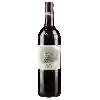
Château de LucquesBordeaux Grand France Selection
This wine is a blend of 3 varietals which are the Cabernet-Sauvignon, the Malbec and the Merlot.
This wine generally goes well with poultry, beef or veal.
Food and wine pairings with Bordeaux Grand France Selection
Pairings that work perfectly with Bordeaux Grand France Selection
Original food and wine pairings with Bordeaux Grand France Selection
The Bordeaux Grand France Selection of Château de Lucques matches generally quite well with dishes of beef, veal or game (deer, venison) such as recipes of american fillet (belgian-style beef tartar), sliced endives with ham or venison leg marinated in white wine and grand marnier.
Details and technical informations about Château de Lucques's Bordeaux Grand France Selection.
Discover the grape variety: Cabernet-Sauvignon
Cabernet-Sauvignon noir is a grape variety that originated in France (Bordeaux). It produces a variety of grape specially used for wine making. It is rare to find this grape to eat on our tables. This variety of grape is characterized by small bunches, and small grapes. Cabernet-Sauvignon noir can be found in many vineyards: South-West, Loire Valley, Languedoc & Roussillon, Cognac, Bordeaux, Armagnac, Rhone Valley, Provence & Corsica, Savoie & Bugey, Beaujolais.
Informations about the Château de Lucques
The Château de Lucques is one of of the world's greatest estates. It offers 4 wines for sale in the of Bordeaux to come and discover on site or to buy online.
The wine region of Bordeaux
Bordeaux, in southwestern France, is one of the most famous, prestigious and prolific wine regions in the world. The majority of Bordeaux wines (nearly 90% of the production Volume) are the Dry, medium and Full-bodied red Bordeaux blends for which it is famous. The finest (and most expensive) are the wines of the great châteaux of Haut-Médoc and the right bank appellations of Saint-Émilion and Pomerol. The former focuses (at the highest level) on Cabernet Sauvignon, the latter on Merlot.
The word of the wine: De-vatting
Separation of the fermented juice from all solid particles (skin, pips, deposit of lees) by transferring it to a second tank.












